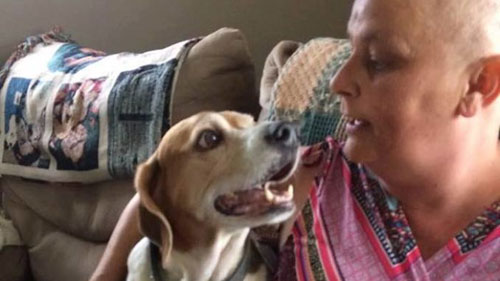Dogs can detect lung cancer with 97% accuracy
Early detection provides the best opportunity for lung cancer survival; however, lung cancer is difficult to detect early because symptoms do not often appear until later stages. Dogs were able to help solve that issue.

Why do we use animals for experiments? Unless they are willing and have a loving home and are provided for, animals should never be used as lab rats or for scientific purposes. What makes us think we have the right to do that?
Animals are a precious gift to humanity, and we have so many lessons to learn from them. If you were an empathetic, benevolent alien looking down on planet Earth, no doubt you’d be heartbroken at and terrified of the way we treat animals. We slaughter them by the billions, destroy their homes, experiment on them, and worse. That being said, the ‘good’ side of humanity loves animals, and there are a lot of activist efforts out there that are speaking up for those who do not have a voice, not to mention the ever growing movement promoting a plant-based diet. We are making progress.
Another important point regarding animals is the fact that we know so little about them. We think we know, but the truth is we don’t know, and there is so much more to discover, especially with regards to certain abilities they may possess like clairvoyance, precognition, telepathy, and other types of extra-sensory perception that human beings may have dormant within them as well.
A study regarding three beagles successfully shows that they are capable of identifying lung cancer by scent, which is the first step in identifying specific biomarkers for the disease. The researchers hypothesized that their abilities may lead to the development of a new type of cancer screening method that is fairly inexpensive. Although we still need more research on the factors in our environment that are causing cancer in the first place, this is still great to see.
However, it’s only great if these animals are not being used solely for the purpose of study and are living happy and healthy lives because, as you may not know, beagles are the dogs most commonly used for scientific experiments, which are cruel and inhumane. At the end of the day, animals should not be used for such purposes. They are here as our companions, as part of our human family.
These dogs were able to tell the difference between blood serum samples that were taken from patients with malignant lung cancer and health controls with, as the study points out, 97 percent accuracy. The double blind study was published in The Journal of the American Osteopathic Association.
Thomas Quinn, the lead author of the study and professor at Lake Erie College of Osteopathic Medicine, said, “We’re using the dogs to sort through the layers of scent until we identify the tell-tale biomarkers. There is still a great deal of work ahead, but we’re making good progress.”
But we should wonder: Do these dogs have families? Are they being loved and cared for? Or are they simply being used for lab experiments?
It sounds like they are simply ‘lab rats,’ given the description of the study, but again, we don’t know. They were led into a room with blood serum samples at nose level. Some samples came from patients with non-small cell lung cancer; others were drawn from healthy controls. After sniffing a sample, the dogs sat down to indicate a positive finding for cancer or moved on if none was detected.
“Samples from 10 donors (6 women and 4 men) were used in the testing phase. Their ages ranged from 26 to 80 years (mean, 58.2 years). The samples from female donors (mean age, 64 years) came from 3 black women, 2 white women, and 1 hispanic woman. The samples from male donors (mean age, 49.5 years) came from 2 black men, 1 white man, and 1 man of mixed race.
Canine No. 1 indicated a positive sample on 10 of the 10 cancer samples and 1 of the 40 control samples during his test runs. Canine No. 2 indicated a positive sample on 10 of the 10 cancer samples and 0 of the 40 control samples during her test runs. Canine No. 3 indicated a positive sample on 9 of the 10 cancer samples and 2 of the 40 control samples during her test runs.”
yogaesoteric
October 14, 2019
